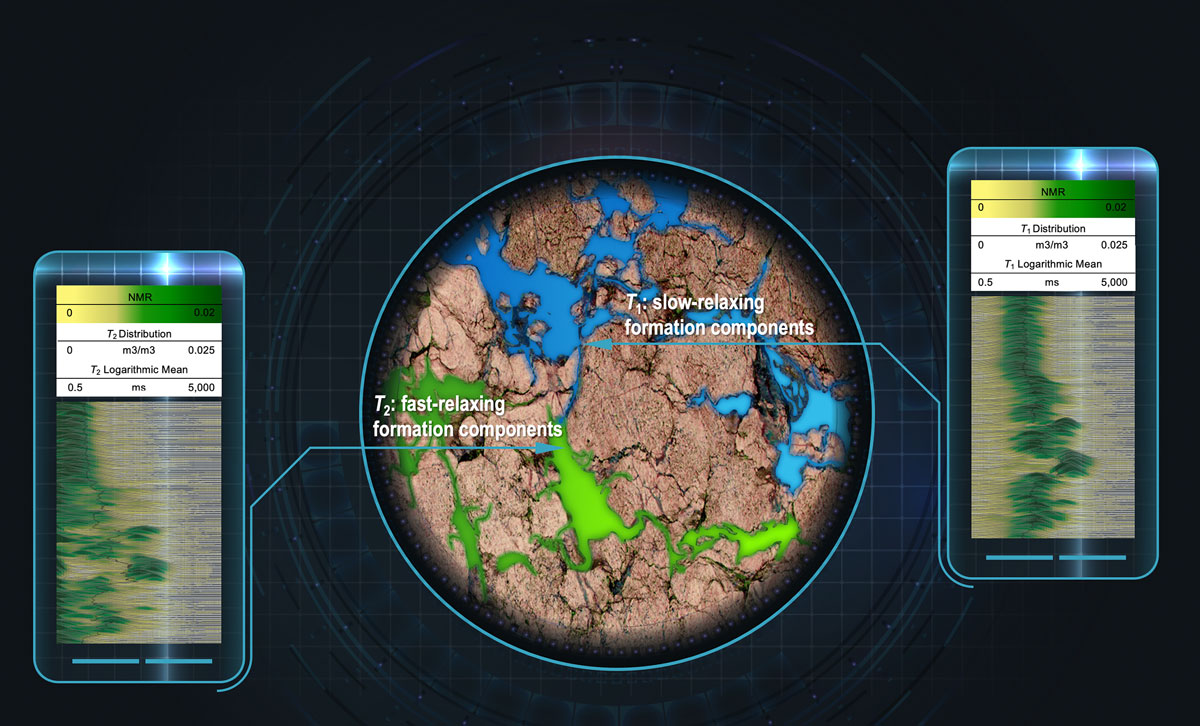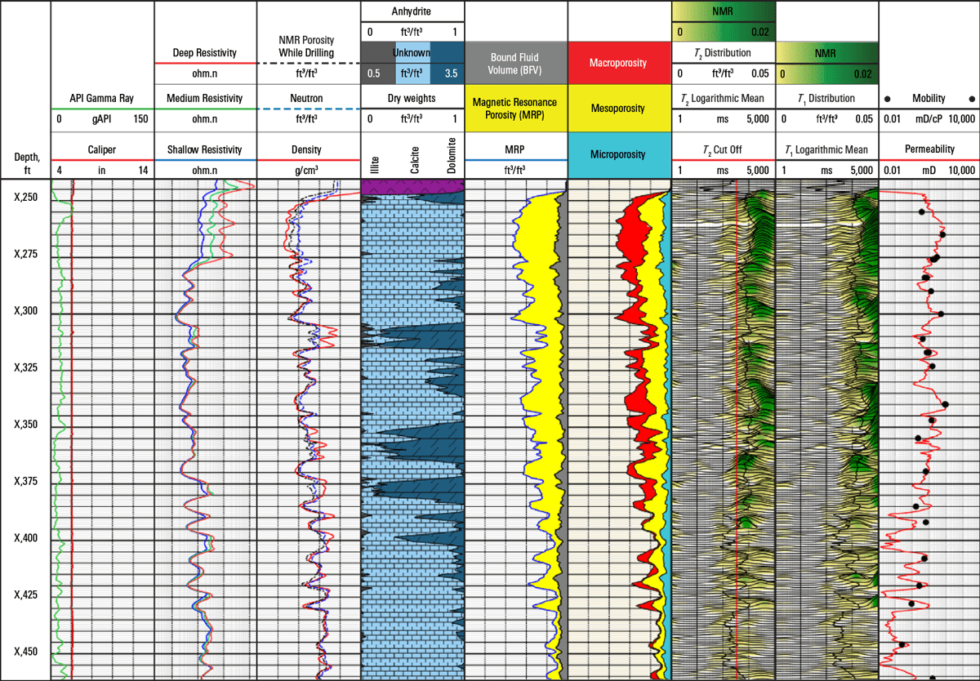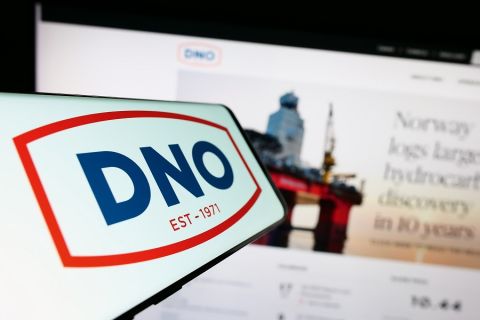Learn more about Hart Energy Conferences
Get our latest conference schedules, updates and insights straight to your inbox.
Presented by:
Editor's note: This article originally appeared in the April issue of E&P Plus.
Subscribe to the digital publication here.
In recent years, formation evaluation and well placement accuracy have become increasingly important to operators seeking to get the greatest return on investment (ROI) possible from their wells targeting highly complex carbonate and clastic reservoirs. LWD solutions have played a significant role in helping operators achieve this, especially since the introduction of nuclear magnetic resonance (NMR) LWD solutions within the past 20 years.
NMR is generally used for LWD applications when formation evaluation from standard measurements such as density neutron is not sufficient or accurate enough for a complete petrophysical and reservoir producibility evaluation. Using a combination of magnetic fields, the NMR tool can act directly on the formation fluid nuclei measuring their polarization time (T1) or relaxation time (T2). The NMR deliverables are then derived from the T1 or the T2 distribution at each depth. These deliverables include matrix independent porosity, pore size distribution, bound and free fluid volumes, pore fluid type, pore fluid characteristics and a continuous permeability estimate.
Today, the industry has access to many LWD options; however, the current industry LWD NMR solutions available are based either on the T1 or the T2 distribution, but not both. Simultaneous, real-time T1 and T2 distribution measurements ensure a complete understanding of the reservoir, regardless of its complexity. The MagniSphere high-definition NMR LWD service for slimhole applications (wellbores less than 6¾ inches) improves the operator’s decision-making during this crucial stage of the well’s life cycle. This new service applies an acquisition workflow that uses overlapping measurement sequences, enabling the industry’s first simultaneous measurements of T1 and T2 distribution while drilling without compromising drilling performance. This delivers real-time petrophysical evaluation data, which are integrated into an intelligent processing workflow. The processed data provide operators with reservoir intelligence to identify producible hydrocarbons while drilling and enable precision geosteering, thus delivering ideal well placement required to maximize production.
LWD NMR challenges
NMR is one of the most complicated measurements made in the oil field today. Complex acquisition sequences are combined and repeated many times to cover the full measurement spectrum while ensuring low signal to noise (S/N) in the final measurement. Time-based acquisition sequences are performed as the NMR sensor rotates, moves axially with the drillstring and is subjected to associated shocks and vibrations. These environmental conditions must be addressed by the tool design or they can significantly affect NMR measurement quality.
There are two key challenges that LWD NMR services need to address for today’s increasingly challenging drilling conditions:
- Measurement quality regardless of the reservoir complexity; and
- Sustained measurement quality in challenging environments without compromising the ROP.
Addressing these challenges is critical for any NMR service to successfully provide operators accurate reservoir evaluation and enable precision geosteering in the varied drilling conditions encountered around the world.
High-definition NMR LWD
The simultaneous acquisition of T1 and T2 distribution measurements is the main feature that addresses measurement quality.
The T1 measurement responds better to large pores and grains, such as macroporous carbonate or high-porosity clastic formations, and light fluids such as light oil or gas. This measurement is also more tolerant of lateral motion effects that can occur while drilling.
T2 measurements are optimum for the characterization of fast-relaxing formation components, such as shale, microporous carbonates and heavy fluids. The high-definition NMR LWD service uses 400-us echo spacing, which is the shortest of all current LWD NMR solutions, to ensure that the fast-relaxing formation components are accurately characterized. The 400-us echo spacing also enables high measurement density and higher vertical resolution.
The simultaneous T1 and T2 acquisition brings the additional benefit that the processing and interpretation workflow can be automated in real-time and recorded mode, ensuring consistent and reliable answers. Traditionally, the T1:T2 ratio is a single value user input. But when both T1 and T2 are available, it can be determined directly from the raw measurements as a variable across the full distribution range. This enables the NMR answers to be delivered directly from the acquisition system in real time for use in formation evaluation and geosteering applications (Figure 1).

Simultaneous T1 and T2 acquisition offers the possibility to characterize a wider range of fluid and rock fabric, and it also reduces user input during real-time acquisition. This ensures a repeatable high-quality NMR measurement regardless of the environment complexity.
To maintain measurement quality in challenging environments without compromising the ROP, the service incorporates the latest innovations in NMR sensor, digital and electronic design to ensure measurement reliability.
Higher tolerance to lateral motion is achieved with a newly engineered receiver, providing a more stable volume of investigation and two built-in sleeves that minimize antenna vibration. The antenna electronics also enable the tool to maintain an optimal S/N ratio in any type of environment, including very saline mud systems. These two features, combined with a compressed acquisition workflow, enable the service to deliver a quality measurement at fast ROP in harsh drilling conditions for extended drilling hours.
Case study
A national oil company in the Middle East completed a large number of high-definition NMR LWD service applications in multiple wells, accumulating high-quality, continuous LWD NMR data. This enabled an accurate evaluation of clastic and carbonate reservoirs by measuring permeability profile, macro- and microporosity volumes, pore size distribution and identifying the presence of various fluid types, such as light and heavy oil, tar or water.
Applications comprised multiple drilling environments, including exposure to lateral motion, shock and vibration, water-based and oil-based muds, and multiple bottomhole assembly configurations.
Figure 2 is a good example of NMR data acquired while drilling in one of the jobs. It features the continuous T1 and T2 distribution as well as the main NMR deliverables.

Conclusion
The simultaneous acquisition of the T1 and T2 distribution provides high resolution on the full relaxation time interval. Combined with the short echo spacing, this results in a robust and repeatable characterization of a wider range of fluid type and rock fabric that is well suited for complex and clastic reservoirs.
The high-definition NMR LWD service is designed and able to sustain a high-quality measurement in the most challenging drilling conditions for extended operating hours. The result is measurable ROI for LWD operations in complex reservoirs, as real-time, high-quality petrophysical data enables better decision-making on production strategy or well placement, which in turn can yield improved production performance
Recommended Reading
DXP Enterprises Buys Water Service Company Kappe Associates
2024-02-06 - DXP Enterprise’s purchase of Kappe, a water and wastewater company, adds scale to DXP’s national water management profile.
ARM Energy Sells Minority Stake in Natgas Marketer to Tokyo Gas
2024-02-06 - Tokyo Gas America Ltd. purchased a stake in the new firm, ARM Energy Trading LLC, one of the largest private physical gas marketers in North America.
California Resources Corp., Aera Energy to Combine in $2.1B Merger
2024-02-07 - The announced combination between California Resources and Aera Energy comes one year after Exxon and Shell closed the sale of Aera to a German asset manager for $4 billion.
Vital Energy Again Ups Interest in Acquired Permian Assets
2024-02-06 - Vital Energy added even more working interests in Permian Basin assets acquired from Henry Energy LP last year at a purchase price discounted versus recent deals, an analyst said.
DNO Acquires Arran Field Stake, Continuing North Sea Expansion
2024-02-06 - DNO will pay $70 million for Arran Field interests held by ONE-Dyas, and up to $5 million in contingency payments if certain operational targets are met.






